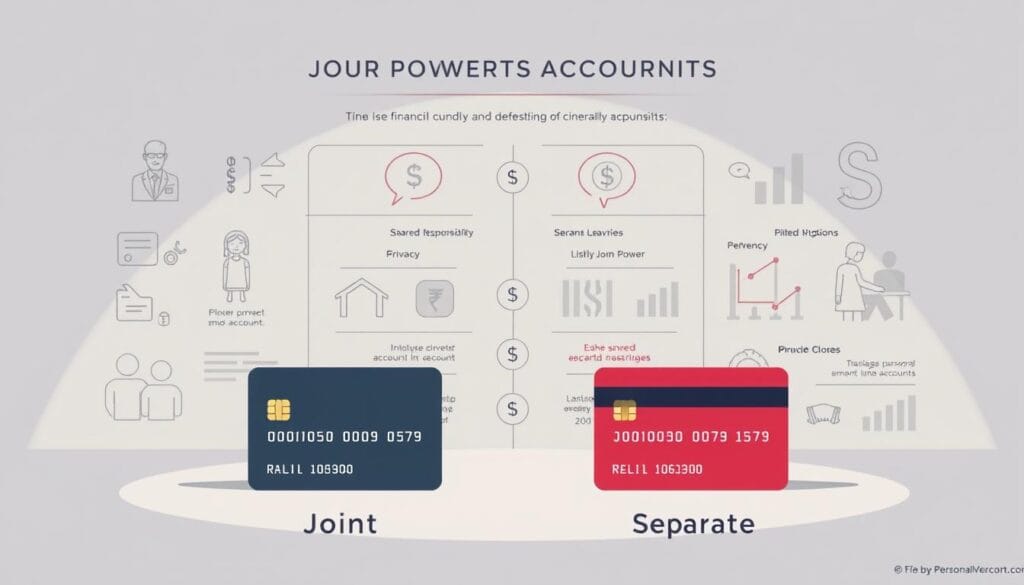Did you know 25% of couples argue about money regularly? According to Fidelity Investments, this tension often stems from mismatched priorities—like when one partner prioritizes future stability while the other focuses on immediate needs. Navigating this dynamic requires more than spreadsheets: it demands empathy, strategy, and creative problem-solving.
Financial friction doesn’t mean your goals are doomed. Many relationships thrive when partners establish clear boundaries while working toward gradual alignment. The key lies in balancing individual security with shared objectives—whether that means maintaining separate funds for personal goals or creating joint targets for major expenses.
Success often starts with open conversations about values rather than dollar amounts. What does financial freedom look like for each person? How can both partners feel heard while protecting their future? Practical solutions exist, from automating small contributions to exploring legal safeguards, that help bridge the gap between different money mindsets.
Key Takeaways
- 1 in 4 couples experience money-related conflicts, per Fidelity Investments data
- Transparent communication about financial values reduces tension
- Combining separate and shared funds can satisfy both partners’ needs
- Automated systems help build reserves without daily disagreements
- Legal protections matter when managing unequal contributions
- Small consistent actions create progress toward long-term objectives
Understanding the Financial Challenges When Your Spouse Refuses to Save

Money clashes in relationships often mirror deeper divides. Upbringing, past experiences, and personal values shape how couples view financial security. One might prioritize immediate comforts, while the other focuses on future stability. These differences can strain trust and delay shared milestones.
When Values Collide: The Ripple Effects
Opposing money habits don’t just drain budgets—they erode emotional connections. A 2023 study found that 68% of partners report increased stress when expenses outpace savings. For example, frequent impulse purchases might delay homeownership or reduce retirement contributions by 12-18% annually.
Aligning Daily Choices With Long-Term Vision
Disparate spending patterns create tangible roadblocks. Consider this breakdown of common habits versus goals:
| Spending Habit | Immediate Impact | Long-Term Risk |
|---|---|---|
| Daily takeout meals | $300/month drain | Delays emergency fund by 8 months |
| Unplanned tech upgrades | Reduces retirement contributions | Lowers nest egg by $47,000 over 15 years |
| High credit card balances | Limits loan approvals | Postpones home purchase 2-4 years |
Protecting your future financial security requires acknowledging these gaps. Start by designating specific funds for personal priorities while maintaining joint accounts for fixed expenses. This hybrid approach respects individual autonomy while safeguarding collective objectives.
Remember: Progress often means compromising on timelines, not values. Small, consistent actions—like automating 5% of each paycheck—build stability without constant negotiation. Over time, these steps can bridge the difference in money mindsets.
Assessing the Risks of Joint Versus Separate Accounts

Choosing between joint and separate accounts is more than a logistical decision—it shapes how partners build trust and manage financial vulnerability. Every banking structure carries unique benefits and risks, from legal access to funds to long-term security measures.
Pros and Cons of Joint Bank Accounts
Joint bank accounts offer shared access but require mutual trust. Both owners can deposit or withdraw money freely, which simplifies bill payments yet increases exposure to impulsive decisions. For example, FDIC insurance covers up to $500,000 in these arrangements—double the protection of individual bank accounts.
| Feature | Joint Account | Separate Account |
|---|---|---|
| Access to Funds | Both partners | Individual only |
| FDIC Coverage | $500,000 | $250,000 |
| Expense Management | Centralized | Decentralized |
| Financial Privacy | Limited | Full control |
Privacy and Control Over Your Funds
Separate accounts provide autonomy but demand more coordination. They shield personal reserves from a partner’s spending habits while requiring clear financial agreements for shared responsibilities. This setup works well when one prioritizes privacy or has irregular income streams.
Consider this: 43% of couples using hybrid systems report fewer money conflicts. Blending joint and individual bank accounts balances transparency with personal boundaries. Automation tools can sync contributions to shared goals without sacrificing independence.
Savings Account Spouse Refuses Save: Establishing Separate Financial Control

Secure your future by establishing individual financial safeguards. Creating personal reserves allows you to pursue stability without compromising relationship harmony. Start by selecting institutions that align with your goals—whether prioritizing digital convenience or competitive returns.
Setting Up Your Own Bank Account
Opening a personal bank account takes under 20 minutes online. You’ll need:
- Government-issued ID (driver’s license or passport)
- Social Security number
- Proof of address (utility bill or lease agreement)
Compare banking features using this breakdown:
| Account Type | APY Range | Minimum Balance | Liquidity |
|---|---|---|---|
| High-Yield Savings | 4.00%-5.25% | $100-$500 | Immediate |
| Certificate of Deposit | 4.50%-5.75% | $1,000+ | Term-based |
| Money Market | 3.75%-4.90% | $2,500+ | Limited checks |
Strategies for Protecting Your Savings
Automate transfers to grow reserves silently. Split direct deposits so 10-15% flows directly into your chosen accounts. Enable two-factor authentication and unique passwords to safeguard information.
For long-term security, consider pairing personal reserves with retirement planning strategies. Paperless statements reduce physical clutter while enhancing privacy—critical when maintaining financial boundaries.
Legal Considerations and Asset Protection

Financial security becomes more complex when relationships face uncertainty. State laws often determine how assets get divided if partnerships dissolve. In North Carolina, courts split marital property equally—even if only one partner contributed funds. This reality makes understanding legal boundaries essential for protecting your future.
Understanding Marital Versus Separate Property
Marital property includes income, investments, or accounts acquired during marriage. Separate property covers items owned before marriage or received via inheritance. For example, a savings account opened post-wedding typically becomes shared assets—even with only one name on it.
| Property Type | Examples | Legal Status |
|---|---|---|
| Marital | Joint income, home purchased together | Split 50/50 in most states |
| Separate | Inheritance, pre-marriage accounts | Usually remains individual |
Advice From Divorce and Family Law Perspectives
Family law experts emphasize transparency. Hiding assets during divorce proceedings risks fines or loss of credibility in court. “Clear documentation is your strongest defense,” notes Charlotte-based attorney Maria Lopez. “Track contributions to separate accounts with bank statements or notarized records.”
Prenuptial agreements offer another layer of protection. These contracts clarify property rights upfront, reducing conflicts later. Postnuptial agreements work similarly for existing marriages. Both tools help couples align on financial strategies while respecting individual interests.
Every state handles divorce differently. Consulting local attorneys ensures your approach meets regional requirements. Small steps—like separating inherited funds or updating beneficiaries—can safeguard your stability without escalating tensions.
Creating a Budget to Champion Your Savings Goals

Crafting a personalized budget transforms financial friction into forward momentum. Think of it as building a roadmap where every dollar supports your priorities—without demanding constant debates. Start by mapping fixed household costs, then identify flexible areas where small adjustments create space for personal objectives.
Step-by-Step Budgeting Techniques
The 50/30/20 rule offers clarity: allocate 50% to needs, 30% to wants, and 20% to goals. For hands-on control, try zero-based budgeting—assign every cent a job before the month begins. Envelope systems work well for visual learners, with cash divided into labeled categories.
- Automate transfers to dedicated funds first
- Color-code spreadsheets to spot spending trends
- Schedule weekly 15-minute money check-ins
Tracking Progress Without Tension
Modern tools simplify monitoring. Apps sync with bank accounts to categorize expenses instantly, while shared digital trackers maintain transparency. Try this comparison:
| Method | Best For | Success Rate |
|---|---|---|
| Mobile Apps | Real-time updates | 73% stick with it |
| Spreadsheets | Custom analysis | 68% prefer flexibility |
| Pen & Paper | Mindful spending | 61% feel more engaged |
Celebrate milestones like hitting your first $1K reserve. These wins build confidence to tackle bigger goals. Need help aligning priorities? Explore collaborative financial strategies that respect differing perspectives.
Remember: Consistency beats perfection. Even $50 monthly deposits grow to $6,000 in a decade—with compound interest doing heavy lifting. Tools like AI-powered budgeting assistants help maintain momentum when willpower wanes.
Exploring Bank Options and Account Features
Selecting the right financial tools can turn saving from a chore into a strategic advantage. Modern banking offers diverse solutions to grow reserves while managing risk. Focus on three pillars: competitive yields, deposit security, and accessibility.
High-Yield Savings Accounts and APYs
Online institutions now offer annual percentage yields (APYs) reaching 5%—10x higher than traditional banks. These digital-first options often eliminate monthly fees and minimum balance requirements. For example:
| Account Type | Top APY | Access |
|---|---|---|
| High-Yield Savings | 5.05% | 24/7 digital |
| Money Market | 4.80% | Limited checks |
| 1-Year CD | 5.25% | Term-locked |
Prioritize liquid accounts for emergency funds while using CDs for longer-term goals. Always verify withdrawal limits and penalty terms.
Understanding FDIC Insurance and Joint Account Implications
The FDIC protects up to $250,000 per person at each bank. Joint arrangements double coverage to $500,000—but require shared control. Consider splitting funds across multiple institutions to maximize protection without compromising autonomy.
Key strategies:
- Open individual accounts at 2-3 banks
- Use FDIC’s Electronic Deposit Insurance Estimator
- Avoid joint setups if transparency concerns exist
Hybrid approaches let you secure funds while maintaining financial independence. Regular rate comparisons ensure you’re always earning top returns.
Addressing Relationship Dynamics and Financial Communication
Money talks often feel like walking a tightrope between harmony and conflict. Partners bring distinct priorities shaped by upbringing, experiences, and aspirations. Bridging these gaps requires strategies that honor both individuality and shared objectives.
Strategies for Effective Conversations About Money
Start discussions by exploring values rather than numbers. Ask: “What experiences matter most to us this year?” or “How can we reduce stress around bills?” Framing talks around mutual benefits lowers defenses and fosters collaboration.
Consider this approach comparison:
| Approach | Benefit | Example |
|---|---|---|
| Value-Based Framing | Aligns with priorities | “Let’s save for beach trips instead of cutting dining out” |
| Shared Goal Setting | Builds teamwork | “We could visit Italy in 18 months if we set aside $200/month” |
| Automated Compromises | Reduces friction | Using automated savings tools for specific targets |
Boundaries protect individual autonomy while nurturing trust. Designate “no-judgment” funds for personal spending. Schedule monthly check-ins to celebrate progress without criticism.
When tensions arise, third-party experts offer neutral guidance. Certified financial planners or therapists help unpack emotional blocks. Small steps—like agreeing on one shared goal—create momentum for bigger changes over time.
Conclusion
Navigating financial harmony when priorities differ demands both strategy and empathy. Building stability often begins with individual accounts that protect personal reserves while maintaining shared joint account structures for household needs. Automation tools and hybrid banking systems allow gradual growth without daily friction.
Understanding state laws around marital property proves critical. Assets acquired during marriage typically qualify as shared resources, making documentation essential. Track contributions to personal bank accounts with bank statements or legal records to clarify ownership boundaries.
Choose financial products that align with your goals—high-yield options for growth, FDIC-insured accounts for security. Maintain privacy through separate logins and paperless statements while ensuring transparency where required by law.
Progress hinges on balancing autonomy with collaboration. Schedule regular check-ins to celebrate milestones and adjust strategies. With thoughtful planning, you can safeguard assets while nurturing trust—proving financial security and relationship harmony aren’t mutually exclusive goals.
Take action today by reviewing account structures and legal safeguards. Small steps create lasting stability, even when approaches differ between partners.

